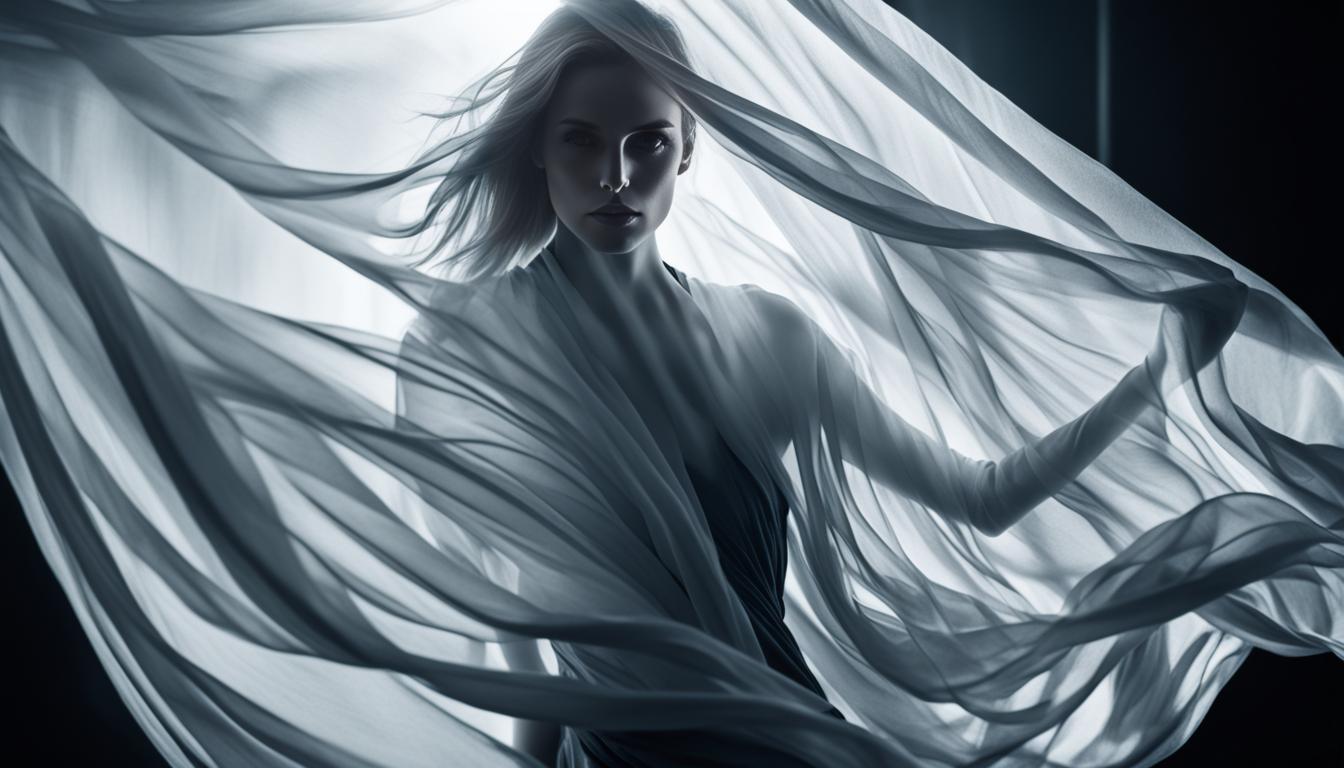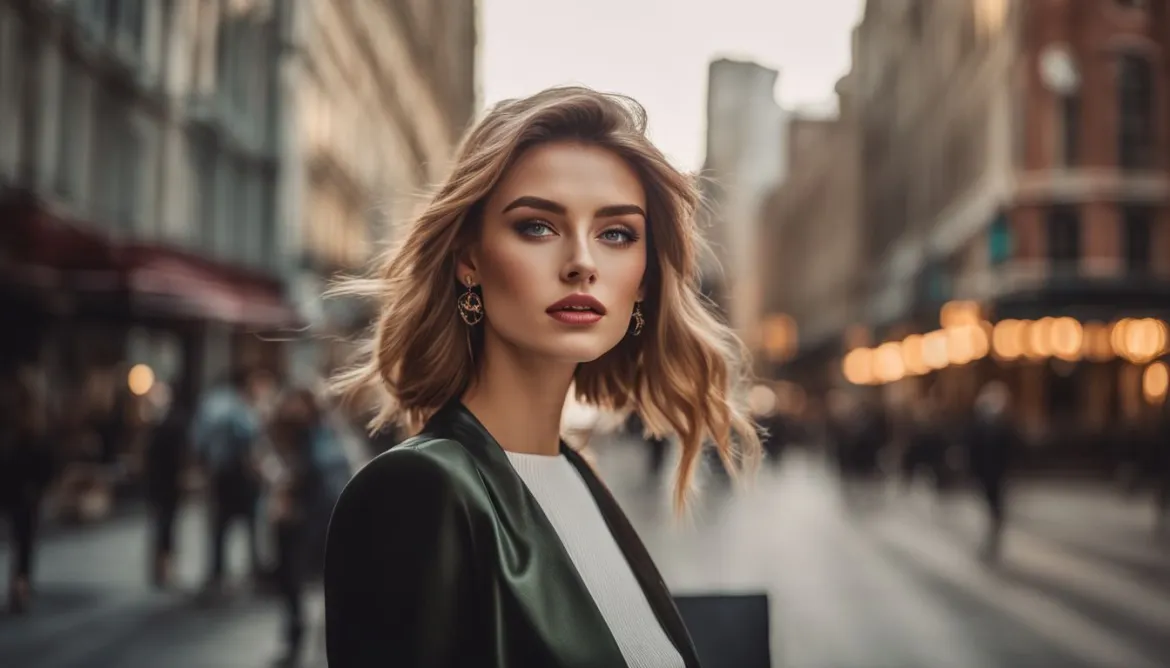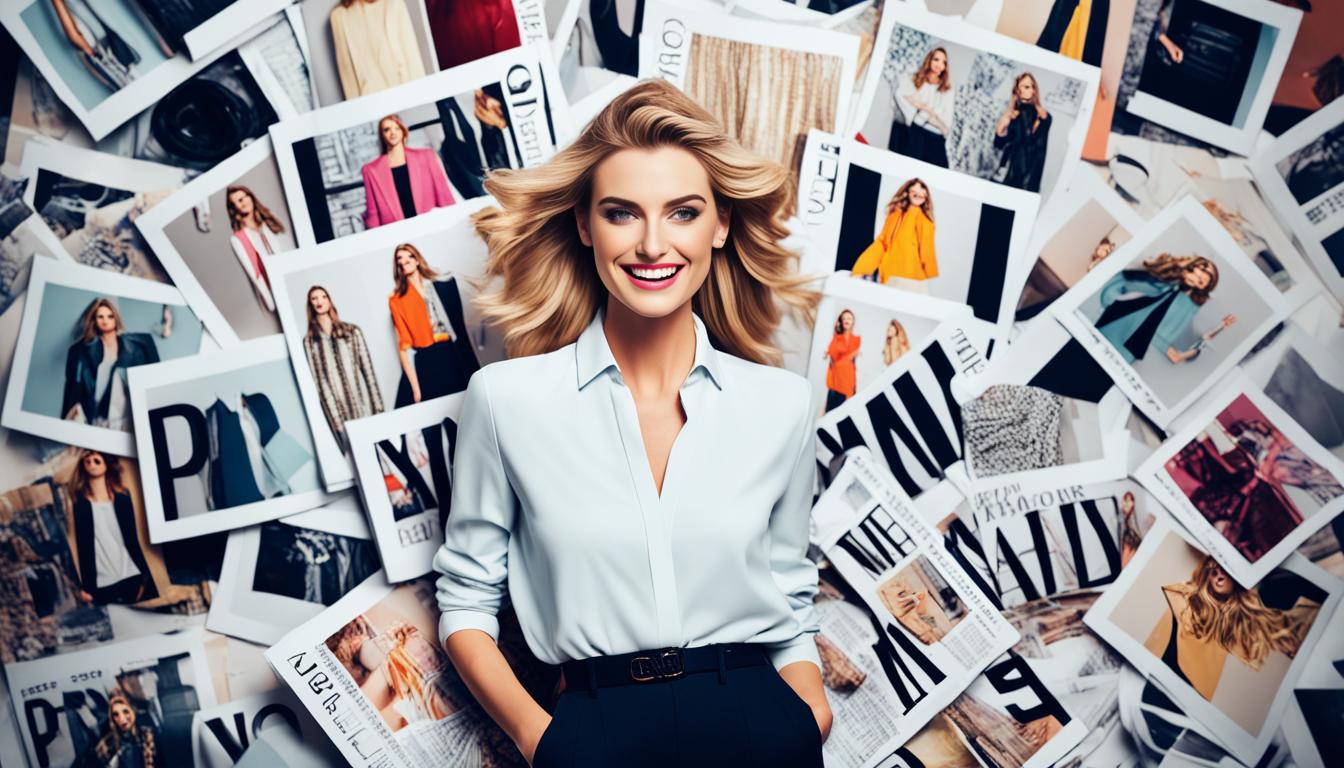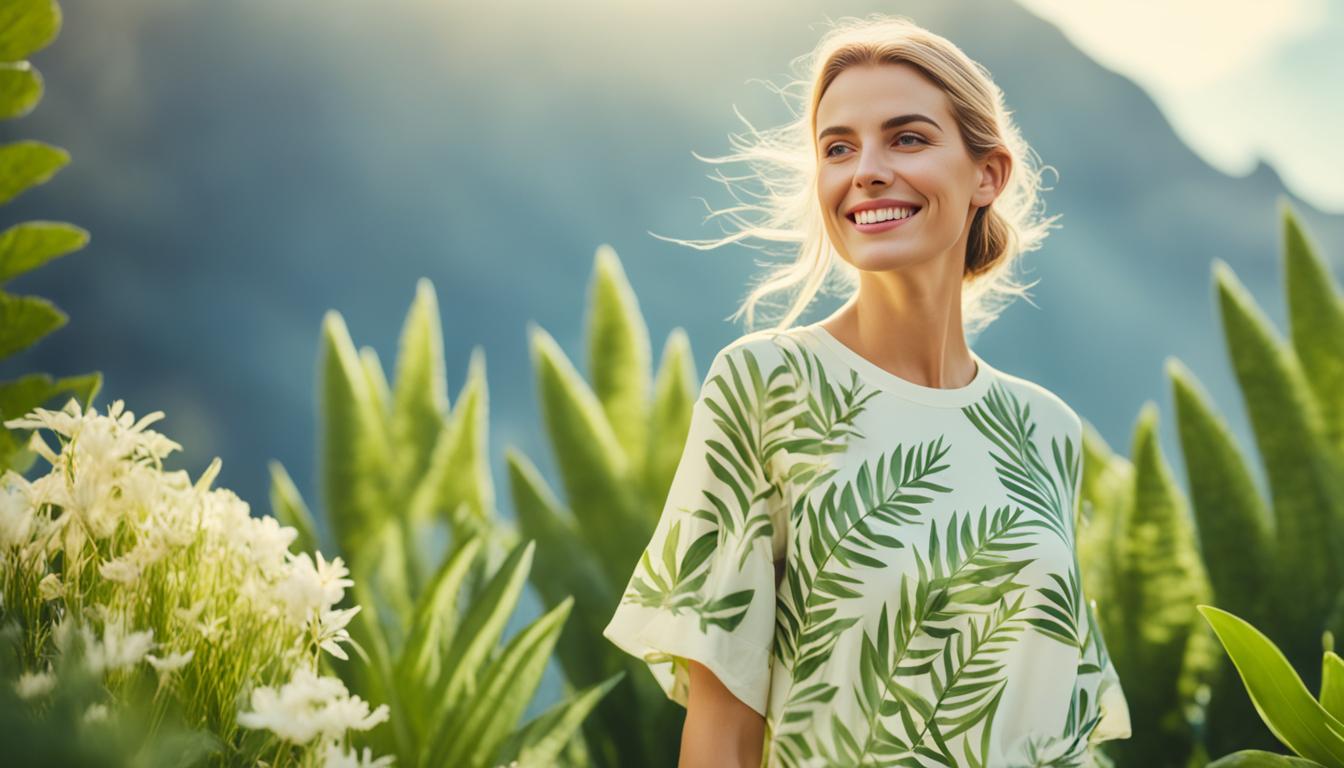Welcome to our guide on developing a signature style in fashion photography! As fashion photographers, we understand the importance of creating a unique and compelling photography style that sets us apart in this competitive industry. In this article, we’ll explore various techniques, tips, and strategies that can help you craft your own distinctive fashion photography style.
Whether you’re just starting your journey in fashion photography or looking to refine your existing style, we have you covered. From composition strategies to lighting techniques, from posing tips to post-processing secrets, we’ll provide you with valuable insights and inspiration to develop your photography aesthetic.
With a signature style, you can establish yourself as a unique and creative fashion photographer, attract clients who resonate with your work, and leave a lasting impact on the industry. Let’s dive in and unlock the secrets to creating a fashion photography style that truly reflects your artistic vision.
Key Takeaways:
- Developing a signature style in fashion photography is crucial for setting yourself apart in the industry.
- By incorporating various techniques and strategies, you can craft a unique fashion photography style that resonates with your artistic vision.
- Exploring different sources and seeking expert advice can provide inspiration and guidance in developing your own signature style.
- Stay true to your artistic vision and continue to experiment and refine your style throughout your career.
- A signature style helps you establish yourself as a professional and gain recognition in the fashion photography industry.
Exploring Creative Ideas for Fashion Photography Sets
One way to make your fashion photography stand out is by creating visually captivating sets. While traditional white and black backgrounds are common, incorporating bold colors and interesting props can add depth and uniqueness to your photos. Renowned fashion photographer Lindsay Adler recommends using Savage seamless paper in creative ways to elevate your studio photography. By incorporating the color palette of the wardrobe and utilizing creative set building techniques, you can create visually stunning fashion photography sets that capture attention.
Instead of relying on plain backgrounds, consider experimenting with vibrant colors that complement the clothing and convey a specific mood or theme. Whether it’s a vibrant red backdrop to evoke passion or a cool blue setting for a serene atmosphere, the strategic use of color can make a powerful impact on your fashion photos.
In addition to color, incorporating interesting props into your sets can create a visually engaging and dynamic composition. Props can range from simple objects like chairs or mirrors to more elaborate elements like flower walls or vintage furniture. The key is to select props that complement the clothing and enhance the overall visual narrative of the photoshoot. Be creative and think outside the box when choosing props, as they can add character and context to your fashion photography.
Lindsay Adler’s use of Savage seamless paper in creative ways serves as a fantastic example of how to elevate your studio photography. Savage offers a wide range of colors, allowing you to find the perfect backdrop to showcase your fashion creations. Whether it’s a rich and moody set or a bright and energetic composition, the color choices can significantly impact the overall aesthetic of your fashion photography.
Here’s a visual interesting set that demonstrates the use of bold colors and interesting props in fashion photography:
Creative Ideas for Fashion Photography Sets
| Color Palettes | Props |
|---|---|
|
|
Crafting a Concept and Story for Your Fashion Photoshoot
Every fashion photoshoot should have a clear concept and story behind it. Defining your concept and creating a fashion photoshoot brief is crucial for cohesive and purposeful photography. Start by brainstorming ideas and jotting down various concepts that resonate with you. From there, refine your ideas and create a mood board to visually guide your team and communicate your vision. By having a well-defined concept, you can create visually compelling fashion photos that convey a narrative and capture the essence of your story.
Developing a Fashion Photography Concept
When crafting the concept for your fashion photoshoot, it’s important to consider the overall message or theme you want to convey. Identify the inspiration behind the shoot, whether it’s a specific era, location, or emotion. Brainstorm different ideas and explore how they align with your unique style as a photographer. Remember, a strong and cohesive concept will help create a memorable and impactful series of fashion photographs.
“The creative process starts with a concept that will serve as the foundation of your fashion photoshoot. It’s the driving force behind every decision you make, from styling to location selection.” – Andrea Pellegrini, Fashion Photographer
Creating a Fashion Photoshoot Brief
Once you have a clear concept in mind, it’s time to create a fashion photoshoot brief. This document provides direction and guidance for everyone involved in the photoshoot, including models, stylists, hair and makeup artists, and assistants. The brief should outline the key elements of the shoot, such as the desired mood, style, and specific shots to capture.
Include important details like the location, wardrobe choices, and any props or accessories that will enhance the visual storytelling. Clearly communicate your expectations to ensure everyone is on the same page and working towards a common vision. Remember, a well-prepared brief will help ensure that the final images align with your concept and tell a cohesive story.
Utilizing a Mood Board
A mood board is a visual tool that helps communicate the overall look, feel, and atmosphere of your fashion photoshoot. It’s a collage of images, colors, textures, and other visual references that evoke the desired mood and aesthetic. Creating a mood board can be done using physical materials like magazines and printed images, or through digital platforms like Pinterest or Adobe Photoshop.
When compiling your mood board, include photographs, fashion editorials, color palettes, and even snippets of text that inspire your concept. The mood board serves as a visual guide for the entire team, ensuring everyone understands and aligns with the desired aesthetic. It helps establish a cohesive visual language and serves as a reference point throughout the photoshoot.

Using a mood board in fashion photography can be a powerful tool for effective communication and collaboration. It helps bring your concept to life and ensures that all team members are working towards a shared vision.
| Key Elements of a Fashion Photoshoot Brief | Why It’s Important |
|---|---|
| Concept and mood | Provides a clear vision and direction for the photoshoot. |
| Location | Determines the backdrop and atmosphere for the images. |
| Wardrobe and styling | Defines the fashion choices that align with the concept. |
| Props and accessories | Adds visual interest and enhances the storytelling. |
| Desired shots and poses | Gives specific direction to the models and enables focused capturing of key moments. |
Creating a comprehensive fashion photoshoot brief ensures that all aspects of your concept are considered and executed cohesively. It allows for efficient communication and teamwork, resulting in fashion photos that tell a captivating story.
Mastering Lighting Techniques in Fashion Photography
Lighting plays a crucial role in fashion photography, allowing us to create stunning and impactful images that capture the essence of our subject. While natural light can be beautiful, it may not always be the most ideal for capturing fashion photos. To truly master the art of lighting in fashion photography, it’s important to understand different techniques and learn how to control and manipulate light effectively.
Experimenting with Different Lighting Setups
One of the key aspects of mastering lighting in fashion photography is experimenting with different lighting setups. By utilizing various lighting equipment and modifiers, such as softboxes, beauty dishes, and reflectors, we can achieve different effects and create the desired mood for our photos. Whether you want a soft and ethereal look or a more dramatic and high-contrast lighting, exploring different setups allows you to unleash your creativity and find the perfect lighting style for your fashion photography.
Utilizing Additional Artificial Lights
In addition to natural light, incorporating artificial lights can greatly enhance your fashion photography. By strategically placing additional light sources, such as strobes or continuous lights, you can highlight specific areas and create depth in your images. This technique allows you to have complete control over the lighting and ensure that every detail of the fashion garments is beautifully illuminated.
Controlling and Manipulating Light
The ability to control and manipulate light is a crucial skill for fashion photographers. Whether you’re using natural or artificial light, understanding how to shape, diffuse, and bounce light can transform your images. Using light modifiers, like diffusers, grids, and gels, allows you to create the desired mood and produce visually striking results. Experiment with different angles and intensities of light to sculpt the perfect lighting for your fashion photography.
| Pros of Natural Light | Cons of Natural Light |
|---|---|
| Soft and flattering illumination | Dependent on weather conditions |
| Creates a natural and organic look | Limited control over lighting direction and intensity |
| Creates beautiful catchlights in the eyes | Inconsistent lighting throughout the day |
While natural light can produce stunning results, it’s important to acknowledge its limitations in fashion photography. Factors such as weather conditions and the varying intensity of light throughout the day can impact the consistency of your images. Additionally, the lack of control over lighting direction and intensity can pose challenges when trying to achieve a specific aesthetic.
To overcome these limitations and have complete control over the lighting, artificial lighting is widely used in fashion photography. This allows photographers to achieve consistent results and create the desired mood and impact in their images.
In text must include SEO relevant keywords – fashion photography lighting techniques, natural light in fashion photography, artificial lighting in fashion photography.
Directing and Posing Models in Fashion Photography
Working with models is an important aspect of fashion photography. As photographers, it is our responsibility to direct and pose models in a way that showcases the fashion and conveys the desired mood or story. By understanding different posing techniques, experimenting with dynamic poses, and exploring unique camera angles, we can create visually striking fashion photos that captivate the audience.
When directing models, effective communication and collaboration are key. By clearly communicating our vision and providing guidance, we can ensure that the models understand the desired outcome and can effectively bring our ideas to life.
Posing Techniques
There are various posing techniques that can be utilized in fashion photography to create different looks and capture the essence of the garments. Here are a few techniques to consider:
- Power posing: Encourage models to adopt strong and confident poses that highlight the fashion and create a sense of empowerment.
- Fluid movements: Capture the flow and movement of the garments by directing models to make subtle movements or incorporating props that create dynamic poses.
- Silhouette poses: Highlight the shape and structure of the clothing by directing models to create striking silhouettes against the backdrop.
- Contrasting poses: Experiment with contrasting poses to add visual interest and create a dynamic composition.
Exploring Camera Angles
The choice of camera angle can greatly impact the overall look and feel of a fashion photo. By exploring different camera angles, we can create unique and visually compelling images. Here are a few camera angles to consider:
- Overhead angle: Capture the fashion from above to showcase the entire ensemble and the patterns or textures of the clothing.
- Low angle: Shoot from a low angle to create a sense of drama and emphasize the height and presence of the model.
- Eye-level angle: Capture the fashion at eye level to create a connection between the viewer and the model.
- Diagonal angle: Experiment with diagonal angles to add a sense of movement and energy to the composition.
The key is to explore different posing techniques and camera angles to find the ones that best complement your signature style in fashion photography. Don’t be afraid to experiment and push boundaries to create visually stunning images that capture the essence of the fashion and tell a story.

Through effective communication, collaboration, and a keen eye for capturing dynamic poses and unique camera angles, we can create fashion photos that leave a lasting impression. The combination of directing models and utilizing different posing techniques and camera angles allows us to create striking images that showcase the fashion and bring our artistic vision to life.
Enhancing Fashion Photos with Editing Techniques
Post-processing and editing play a significant role in enhancing the overall look and feel of fashion photos. The right editing techniques can transform your images and bring out the essence of your signature style in fashion photography.
One popular editing software used by many fashion photographers is Adobe Lightroom. By utilizing Lightroom presets specifically designed for fashion photography, you can easily enhance and elevate your images to match your desired aesthetic. These presets provide pre-determined settings that can be applied with just a few clicks, saving you time and effort in post-processing.
When editing fashion photos, there are several key areas to focus on:
1. Adjusting Colors and Tones
Colors and tones have a significant impact on the overall mood and atmosphere of your fashion photos. Through editing, you can tweak the saturation, hue, and brightness of specific colors to achieve a desired look. This allows you to create a consistent color palette that complements the style and theme of your fashion shoot.
2. Enhancing Details and Clarity
To make your fashion photos truly stand out, it’s important to enhance the details and clarity of your subjects. By using techniques such as sharpening and enhancing the fine details, you can bring attention to the intricate elements of the clothing, accessories, and models. This helps to create a more visually compelling and captivating image.
3. Removing Imperfections
In fashion photography, it’s common for imperfections such as blemishes or wrinkles to appear on the models’ skin or garments. Through editing, you can retouch these imperfections and achieve a flawless look. However, it’s important to find a balance and avoid over-editing, as the goal is to enhance the natural beauty without losing the uniqueness of the subject.
By combining these editing techniques with your creative vision and style, you can enhance the overall impact of your fashion photos and create a cohesive and visually appealing portfolio.
Remember, editing is a tool to enhance and elevate your photos, not to completely transform them. It’s essential to maintain the integrity of the original image and stay true to your artistic vision.
Building a Strong Fashion Photography Portfolio
A strong fashion photography portfolio is crucial for showcasing your talent and attracting clients and opportunities in the industry. At [Your Photography Studio Name], we understand the value of a well-curated and visually appealing portfolio that represents your unique style and expertise in fashion photography.
Creating an online portfolio is an effective way to present your best fashion photography work in a format that is easily accessible to potential clients and collaborators. With advancements in technology, it has never been easier to build a professional online portfolio that showcases your skills and creativity.
By including a wide range of images that demonstrate your versatility and expertise, you can capture the attention of viewers and leave a lasting impression. Make sure to include a diverse selection of fashion photography work, including different styles, aesthetics, and concepts, to highlight your range and creativity as a photographer.
Regularly updating your portfolio with new and fresh content is essential to keep it relevant and engaging. It allows you to showcase your growth as a fashion photographer and demonstrate that you stay current with industry trends. Adding new images that represent your evolving signature style will not only attract more viewers but also increase your chances of getting noticed by potential clients and collaborators.
Remember to include a short bio or artist statement that provides insight into your creative vision and approach to fashion photography. This helps potential clients and collaborators understand your unique perspective and what sets you apart from other photographers in the industry.
We highly recommend organizing your portfolio into different categories or themes to make it easier for viewers to navigate and appreciate your work. This allows potential clients to find specific types of fashion photography that align with their vision and needs.
Lastly, don’t forget to optimize your online portfolio for search engines. By using relevant keywords and tags, you increase the chances of your portfolio appearing in search results when potential clients are looking for fashion photographers. This can greatly enhance your visibility and attract more opportunities in the industry.
At [Your Photography Studio Name], we understand the importance of a strong fashion photography portfolio that represents your unique style and expertise. Let us help you build an impressive online portfolio that showcases your best work and attracts the attention of potential clients and collaborators.
Conclusion
Developing a signature style is essential in the world of fashion photography. It is an ongoing journey that requires a combination of experimentation, creativity, and dedication. By incorporating creative ideas for fashion photography sets, crafting a concept and story, mastering lighting techniques, directing and posing models, enhancing photos through editing, and building a strong portfolio, you can develop a unique and recognizable fashion photography aesthetic.
Embrace your creativity and explore different techniques to create fashion photography that truly represents your artistic vision. By staying true to yourself and your unique perspective, you can produce images that set you apart from the crowd and leave a lasting impact on your audience.
Remember, developing a signature style takes time and practice. It’s important to continuously push your boundaries, seek inspiration from industry experts, and stay updated on the latest trends. Through constant growth and refinement, you can craft a photography style that is uniquely yours.
FAQ
Why is developing a signature style important in fashion photography?
Developing a signature style in fashion photography is important because it sets your work apart and helps establish you as a unique and creative photographer.
What are some creative ideas for fashion photography sets?
Some creative ideas for fashion photography sets include incorporating bold colors, using interesting props, and creating visually interesting backgrounds.
How can I craft a concept and story for my fashion photoshoot?
You can craft a concept and story for your fashion photoshoot by brainstorming ideas, refining them into a solid concept, and creating a mood board to guide your team.
What are some lighting techniques I can use in fashion photography?
Some lighting techniques you can use in fashion photography include experimenting with different setups, utilizing artificial lights, and learning to control and manipulate light.
How can I effectively direct and pose models in fashion photography?
To effectively direct and pose models in fashion photography, you should understand different posing techniques, experiment with dynamic poses, and explore unique camera angles.
How can I enhance my fashion photos through editing?
You can enhance your fashion photos through editing by using software such as Adobe Lightroom, utilizing fashion photography presets, and adjusting colors, tones, and imperfections.
How can I build a strong fashion photography portfolio?
To build a strong fashion photography portfolio, create an online portfolio to showcase your best work, regularly update it with new and diverse images, and present it in a visually appealing format.
What is the importance of developing a signature style in fashion photography?
Developing a signature style in fashion photography is important because it helps you establish a unique and recognizable aesthetic that sets you apart from other photographers.
How Can Developing a Unique Style Help Get My Fashion Photography Published?
Developing a unique style is crucial for getting your fashion photography published. To stand out in the saturated market, focus on producing original and memorable work. Experiment with different techniques, lighting, and settings to create a signature aesthetic that sets you apart. These fashion photography publishing tips can help you make a lasting impression.




